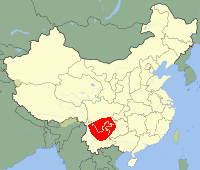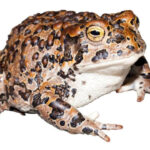- Introduction: Hidden Jewels of Nature's Amphibious Realm
- Taxonomy and Classification: Understanding Its Place in Nature's Family Tree
- Natural Habitat: Life Among the Hidden Pools and Forest Glades
- Physical Characteristics: The Delicate Elegance of a Master of Camouflage
- Behavior and Life Cycle: An Intricate Dance of Survival and Reproduction
- Ecological Role: Integral Threads in the Tapestry of Forest Life
- Threats and Conservation Status: Imperiled Voices Whispering for Assistance
- Cultural and Scientific Significance: Unassuming Ambassador of Conservation Awareness
- Conclusion: Valuing a Delicate Amphibian Gem
Introduction: Hidden Jewels of Nature’s Amphibious Realm#
Deep within untouched pockets of wetland habitats, amidst whispering grasses and quiet pools, an extraordinary creature makes its home—a tiny amphibian known to scientists as Bombina microdeladigitora. As one of nature’s lesser-known secrets, this frog species is not only unique in appearance but astonishing in behavior and vital to its ecological web. Often overlooked due to its elusive habits and diminutive size, the Microdeladigitora Fire-Bellied Toad, as it is colloquially known, holds fascinating secrets that make it worthy of our attention and conservation efforts.
One compelling fact about Bombina microdeladigitora lies embedded directly within its cryptic scientific name, which loosely translates as “tiny delicate digits.” True to its nomenclature, it has evolved distinctively fine, almost delicate fingers and toes designed perfectly for life among fragile vegetation and slippery leaf litter. But these refined digits are merely the beginning of this remarkable creature’s tale, begging us to journey deeper and discover more.
Taxonomy and Classification: Understanding Its Place in Nature’s Family Tree#
Bombina microdeladigitora is a fascinating representative of the Bombinatoridae family, commonly known as the Fire-Bellied Toads. This intriguing family comprises organisms celebrated for vibrant underside markings used to deter predators—a documented example of aposematism (warning coloration) in nature.
Within the genus Bombina, several species capture the imagination of biologists and nature enthusiasts, each displaying variations in bright belly patterns and fascinating defensive behaviors. Bombina microdeladigitora, first described scientifically in recent decades, shares its lineage closely with relatives such as Bombina orientalis and Bombina variegata, yet remains rare and evolutionarily unique due to its remarkably specialized physiology and adaptations uniquely suited to its ecological niche.
Natural Habitat: Life Among the Hidden Pools and Forest Glades#
Bombina microdeladigitora thrives primarily within damp, semi-aquatic environments located in temperate to subtropical regions, exhibiting a strong geographical preference for secluded wetland ecosystems in parts of East Asia. Populations have been recorded within remote areas of southern China and northern Vietnam, particularly nestled in mixed broadleaf forests, humid woodland glades, and meandering marshes cushioned by thick moss carpets and protective leaf cover.
Unlike its more conspicuous relatives, this frog frequently shelters beneath rotting logs, amidst soggy leaf litter, and under alluring patches of verdant moss. Wading carefully through the humid undergrowth reveals the enchanting world they inhabit—soft, splashing puddles formed after seasonal rains; fern-fringed trails that glisten under filtered sunlight; quiet alcoves hidden from the bustle of other wildlife, offering the solitude and humidity these delicate amphibians prefer.
The microhabitats favored by Bombina microdeladigitora are rich in biodiversity, providing abundant food sources such as small insects, beetles, mites, and spiders. Here, every element of the environment perfectly aligns, ensuring both survival and successful reproduction, which we’ll elaborate further in a later section.
Physical Characteristics: The Delicate Elegance of a Master of Camouflage#
A closer encounter with Bombina microdeladigitora unveils a distinct charm that subtly redefines our perception of frogs. Averaging only 2 to 3 centimeters in length, this species is delicately constructed, every limb appearing almost artistically refined. Its digits, as its name implies, are strikingly slender, assisting breathtaking agility both in water and on land. Small adhesive pads lightly touch wet foliage, enabling swift, agile movements necessary for escaping predators and capturing evasive prey.
The coloration harmonizes profoundly with the frog’s environment. A muted combination of olive-green, brown, and slight mossy hues embellishes its dorsal side, carefully mirroring the dappled forest floor, creating an adept camouflage. However, its concealed underside holds the real surprise—a strikingly vivid mosaic of reds, oranges, and yellows punctuated by intricate, contrasting black mottling. These brilliant underside markings are more than merely aesthetic; they function as bold warnings to would-be predators, advertising the frog’s skin toxicity as a chemical deterrent capable of repelling inquisitive predators.
Behavior and Life Cycle: An Intricate Dance of Survival and Reproduction#
Feeding and Foraging Habits#
A remarkably patient predator, this frog employs an ambush strategy when hunting, sitting motionless among the moist leaf litter waiting for unsuspecting insects to pass by. With lightning-speed tongue movements, prey items such as mites, ants, and springtails swiftly disappear. Their feeding habit is both efficient and vital for keeping insect populations in ecological balance within their respective habitats.
Breeding and Reproduction#
Especially riveting during breeding seasons, males perform melodic, high-pitched calls—like a soft, musical humming that resonates gently into forest clearings—to obtain the attention of potential mates. After courtship rituals, females deposit small jelly-like egg clusters, cleverly attached onto submerged vegetation in shallow pools and ditches.
Eggs soon hatch into free-swimming tadpoles nurtured by nutrient-rich algae and organic detritus. Within weeks, metamorphosis occurs, enabling newly-minted froglets to venture onto land equipped to navigate the delicate terrains that their parents have perfectly mastered.
Ecological Role: Integral Threads in the Tapestry of Forest Life#
The contributions of Bombina microdeladigitora to its ecosystem extend immeasurably beyond its tiny stature. Functioning as both predator and prey, these amphibians occupy influential positions in the biodiversity hierarchy. They play significant roles in controlling insect populations that, unchecked, could potentially impact vegetation health and spread forest diseases. Simultaneously, frogs serve as prey for a variety of forest predators, contributing critical energy flow in food webs.
Their sensitivity to environmental changes offers use as vital bioindicators. Healthy populations signify habitat stability and ecological balance, whereas declines signal disruptions such as pollution or climate change impacts—prompting conservationists and ecologists to take corrective action.
Threats and Conservation Status: Imperiled Voices Whispering for Assistance#
Despite its subtle ecological imprint, Bombina microdeladigitora faces notable threats in a rapidly changing world. Habitat fragmentation, encroaching agriculture, and wetland pollution threaten crucial breeding and feeding sites. Additionally, pollutants introduced through agricultural runoff and untreated wastewater substantially harm developing tadpoles.
Currently categorized as Vulnerable by the IUCN Red List, this species warrants immediate conservation attention. Conservation initiatives typically focus on habitat preservation—protecting wetlands, instituting protected areas, and raising awareness about the ecosystem’s importance within local communities. Educating surrounding communities about sustainable land use and curbing detrimental agricultural practices represent meaningful steps towards ensuring the continued survival of these minute yet important amphibians.
Cultural and Scientific Significance: Unassuming Ambassador of Conservation Awareness#
Although folklore specific to Bombina microdeladigitora remains sparse due to its relatively recent scientific identification, frogs and toads throughout history and culture have symbolized renewal, fertility, and environmental health. These creatures often portray guardianship and are respected across many cultures globally.
From a scientific perspective, the discovery of unique compounds found in its skin secretions harbor potential for medicinal research, enriching the possibilities of novel pharmaceutical developments. Moreover, conservation research surrounding the species enhances understanding of healthy ecosystems and furthers global ecological conservation agendas.
Conclusion: Valuing a Delicate Amphibian Gem#
The hidden world of Bombina microdeladigitora reveals itself as wondrous, delicate, and vulnerable. While small and unobtrusive, their continued existence is intimately tied to ecosystem health, biodiversity, and our understanding of environmental balances. It invites us—a call to action—to deepen our appreciation, advocate for crucial habitats, contribute to conservation efforts, and protect not only this tiny amphibian but the intricate balance of life itself.
As we exit their world quietly, let us carry forward a commitment to learn more, conserve diligently, and communicate passionately the importance of protecting Earth’s smallest and most overlooked creatures—for within their delicate existence rests the wellbeing of entire ecosystems.








